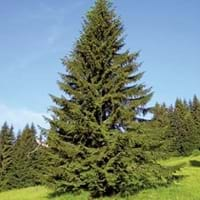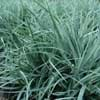Life Span
Annual
Perennial
Type
Perennial
Needled or Scaled Evergreen
Origin
South Africa
Europe
Types
Shasta Daisy
Gloriosa Daisies
Painted Daisy
Pyrethrum Daisies
not available
Number of Varieties
Not Available
Habitat
gardens, Grassland
Not Available
USDA Hardiness Zone
10-11
3-8
Sunset Zone
8, 9, 12, 13, 14, 15, 16, 17, 18, 19, 20, 21, 22, 23, 24
A2, A3, 1a, 1b, 2a, 2b, 3a, 3b, 4, 5, 6, 14, 15, 16, 17
Habit
Clump-Forming
Pyramidal
Flower Color
White, Yellow, Blue, Purple, Orange, Pink, Magenta
Non Flowering Plant
Flower Color Modifier
Bicolor
Bicolor
Fruit Color
Not Available
Non Fruiting Plant
Leaf Color in Spring
Green, Blue Green
Light Green, Dark Green
Leaf Color in Summer
Green, Blue Green
Dark Green
Leaf Color in Fall
Green, Blue Green
Dark Green
Leaf Color in Winter
Light Green
Dark Green
Leaf Shape
Arrowhead
Needle like
Plant Season
Spring, Summer, Fall
Spring, Summer, Fall, Winter
Sunlight
Full Sun
Full Sun, Partial Sun
Type of Soil
Loam
Loam, Sand
The pH of Soil
Neutral
Acidic, Neutral
Soil Drainage
Well drained
Well drained
Bloom Time
Late Spring, Early Summer, Summer, Late Summer, Early Fall, Fall
Not Available
Tolerances
Drought
Drought
Where to Plant?
Ground, Pot
Ground
How to Plant?
Seedlings, Stem Planting
Seedlings
Plant Maintenance
Medium
Medium
Watering Requirements
Allow soil to be completely dry in between waterings, It cannot sustain wet-feet, Keep the ground moist but not water-logged, Water in morning to avoid prompting diseases, Water twice a day in the initial period
Requires regular watering, Requires watering in the growing season
In Summer
Lots of watering
Lots of watering
In Spring
Moderate
Moderate
In Winter
Average Water
Average Water
Soil pH
Neutral
Acidic, Neutral
Soil Type
Loam
Loam, Sand
Soil Drainage Capacity
Well drained
Well drained
Sun Exposure
Full Sun
Full Sun, Partial Sun
Pruning
Cut or pinch the stems, Prune regularly, Remove deadheads
Prune if you want to improve plant shape, Prune to stimulate growth, Remove dead leaves
Fertilizers
All-Purpose Liquid Fertilizer
All-Purpose Liquid Fertilizer
Pests and Diseases
Red blotch
Cytospora canker, Needle rust, Rust
Plant Tolerance
Drought
Drought
Flowers
Yes
Not Available
Flower Petal Number
Single
Single
Foliage Texture
Medium
Medium
Foliage Sheen
Not Available
Not Available
Attracts
Bees, Butterflies
Bugs
Allergy
Not Available
no allergic reactions
Aesthetic Uses
Beautification, Bouquets, Showy Purposes
Showy Purposes, Used as Christmas tree
Beauty Benefits
Not Available
Not Available
Environmental Uses
Air purification
Forms dense stands
Medicinal Uses
Cold, Cough, Stomach pain
Not Available
Part of Plant Used
Flowers
Whole plant
Other Uses
Showy Purposes, Used as Ornamental plant
Used as Ornamental plant, used for making roof trusses, poles, joists, piles, Used in paper industry
Used As Indoor Plant
Yes
Yes
Used As Outdoor Plant
Yes
Yes
Garden Design
Bedding Plant, Container, Cutflower, Foundation, Groundcover, Hanging Basket, Mixed Border, Rock Garden, Wall
Feature Plant, Hedges, Screening, Wind Break
Botanical Name
OSTEOSPERMUM
PICEA abies 'Acrocona'
Common Name
African daisy or Blue-eyed Daisy
Norway Spruce
In Hindi
अफ्रीकी डेज़ी
Norway Spruce
In German
African Daisy
Fichte
In French
marguerite africaine
épinette de Norvège
In Spanish
margarita africana
picea de Noruega
In Greek
Αφρικανική μαργαρίτα
Νορβηγία Spruce
In Portuguese
africano margarida
Noruega Spruce
In Polish
Gerbery
świerk pospolity
In Latin
African primula
Norway Spruce
Phylum
Anthophyta
Coniferophyta
Class
Magnoliopsida
Pinopsida
Family
Asteraceae
Pinaceae
Clade
Angiosperms, Asterids, Eudicots
Not Available
Tribe
Calenduleae
Not Available
Subfamily
Asteroideae
Not Available
Number of Species
Not Available
Not Available
Importance of African Daisy and Norway Spruce
Want to have the most appropriate plant for your garden? You might want to know the importance of African Daisy and Norway Spruce. Basically, these two plants vary in many aspects. Compare African Daisy and Norway Spruce as they differ in many characteristics such as their life, care, benefits, facts, etc. Every gardener must at least have the slightest clue about the plants he wants to plant in his garden. Compare their benefits, which differ in many ways like facts and uses. The medicinal use of African Daisy is Cold, Cough and Stomach pain whereas of Norway Spruce is Not Available. African Daisy has beauty benefits as follows: Not Available while Norway Spruce has beauty benefits as follows: Not Available.
Compare Facts of African Daisy vs Norway Spruce
How to choose the best garden plant for your garden depending upon its facts? Here garden plant comparison will help you to solve this query. Compare the facts of African Daisy vs Norway Spruce and know which one to choose. As garden plants have benefits and other uses, allergy is also a major drawback of plants for some people. Allergic reactions of African Daisy are Not Available whereas of Norway Spruce have no allergic reactions respectively. Having a fruit bearing plant in your garden can be a plus point of your garden. African Daisy has no showy fruits and Norway Spruce has showy fruits. Also African Daisy is flowering and Norway Spruce is not flowering . You can compare African Daisy and Norway Spruce facts and facts of other plants too.





